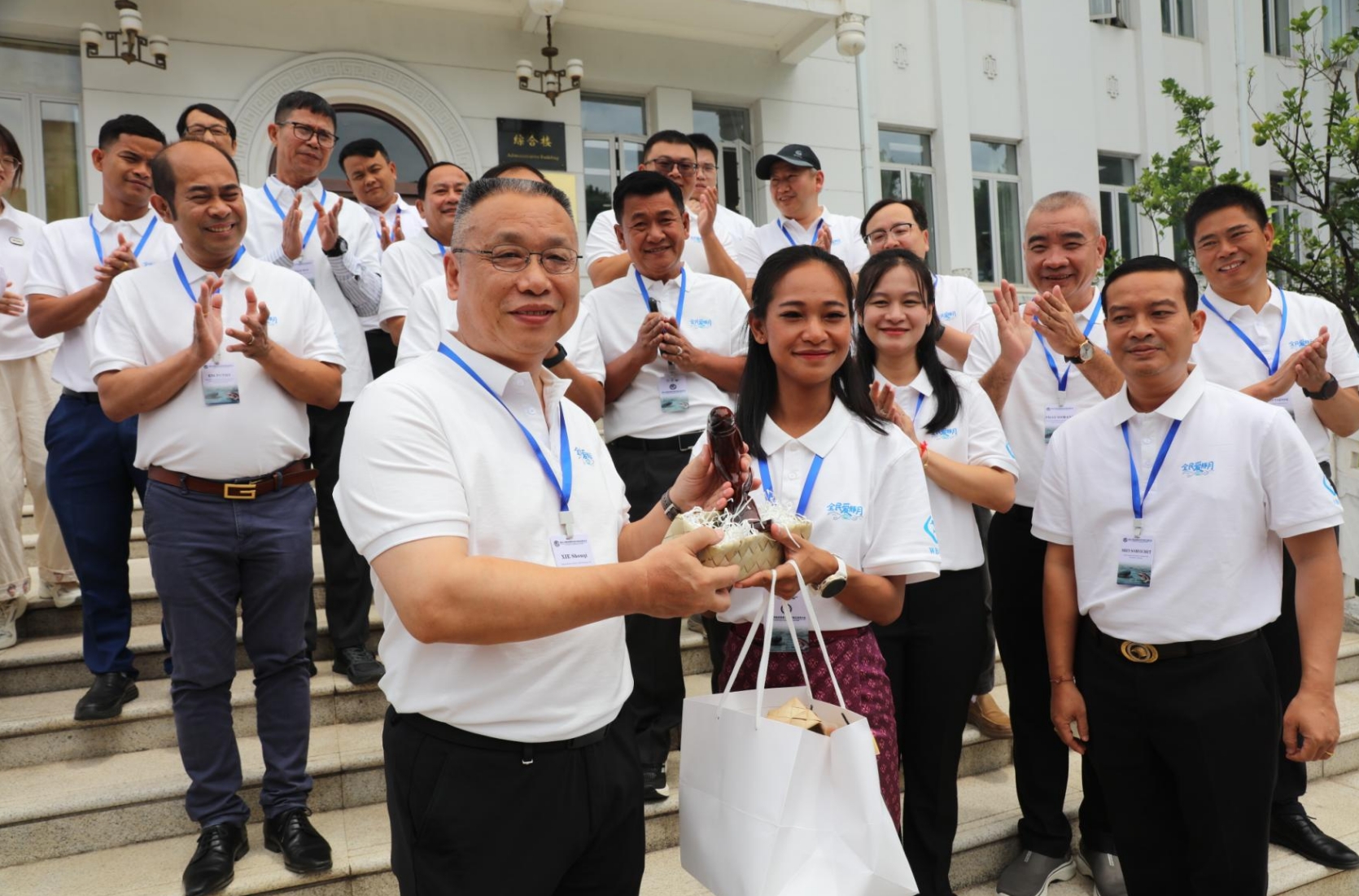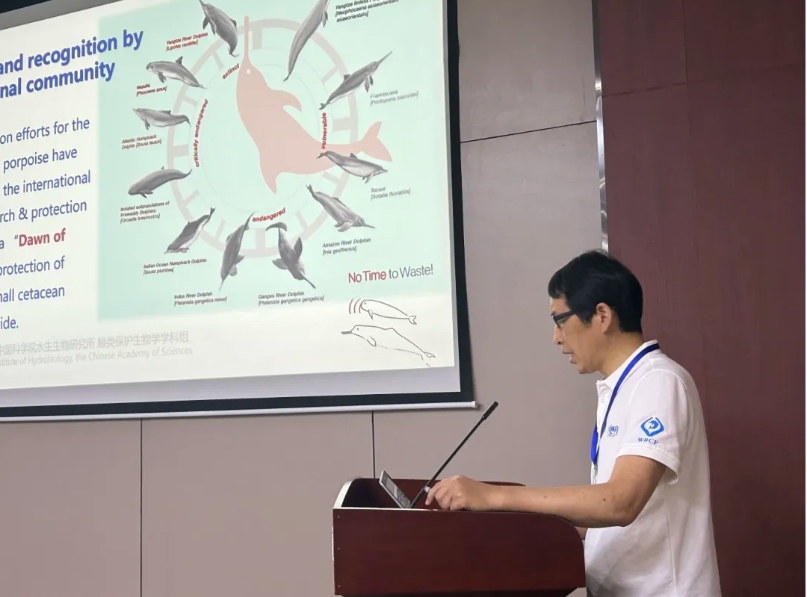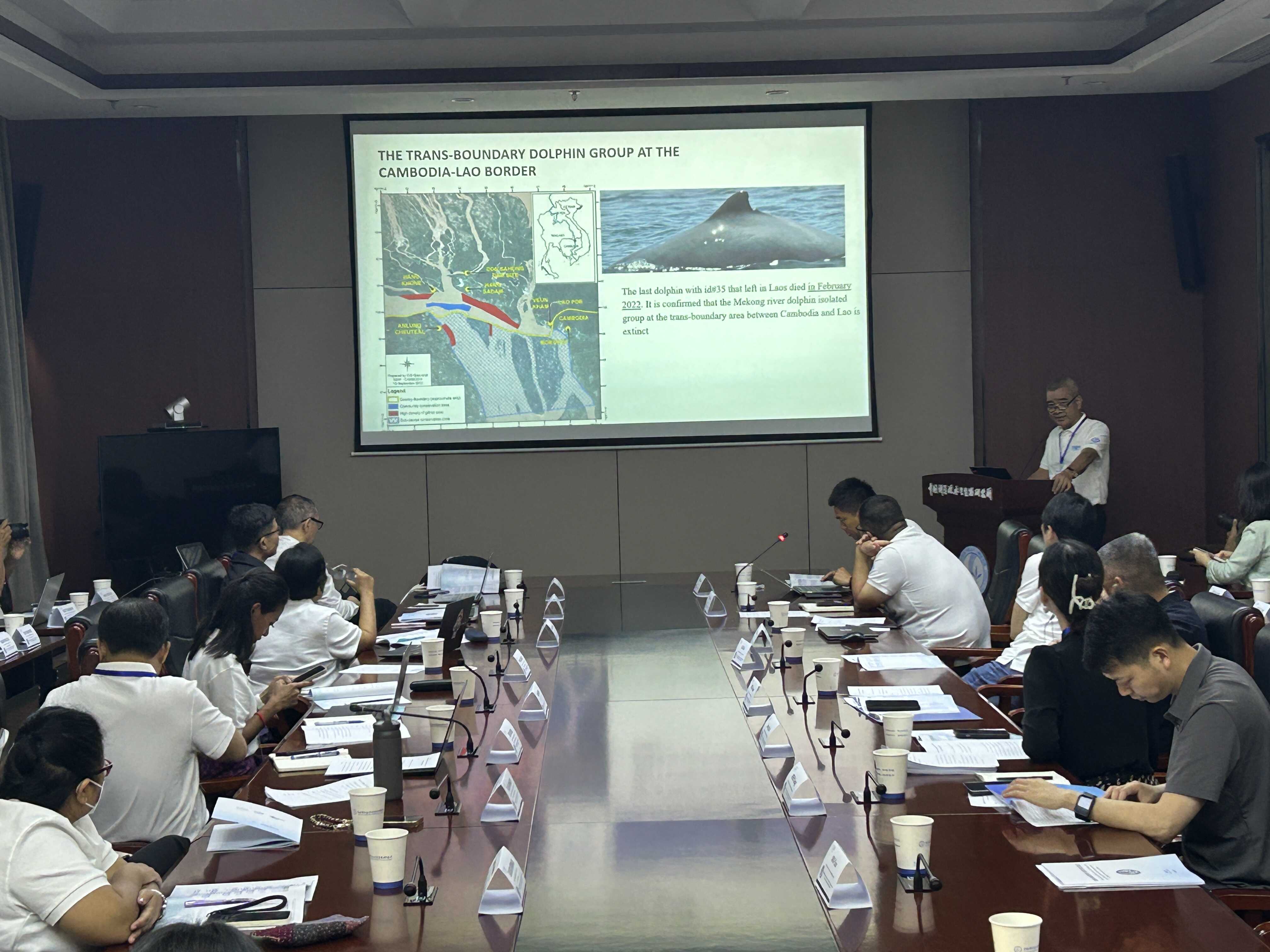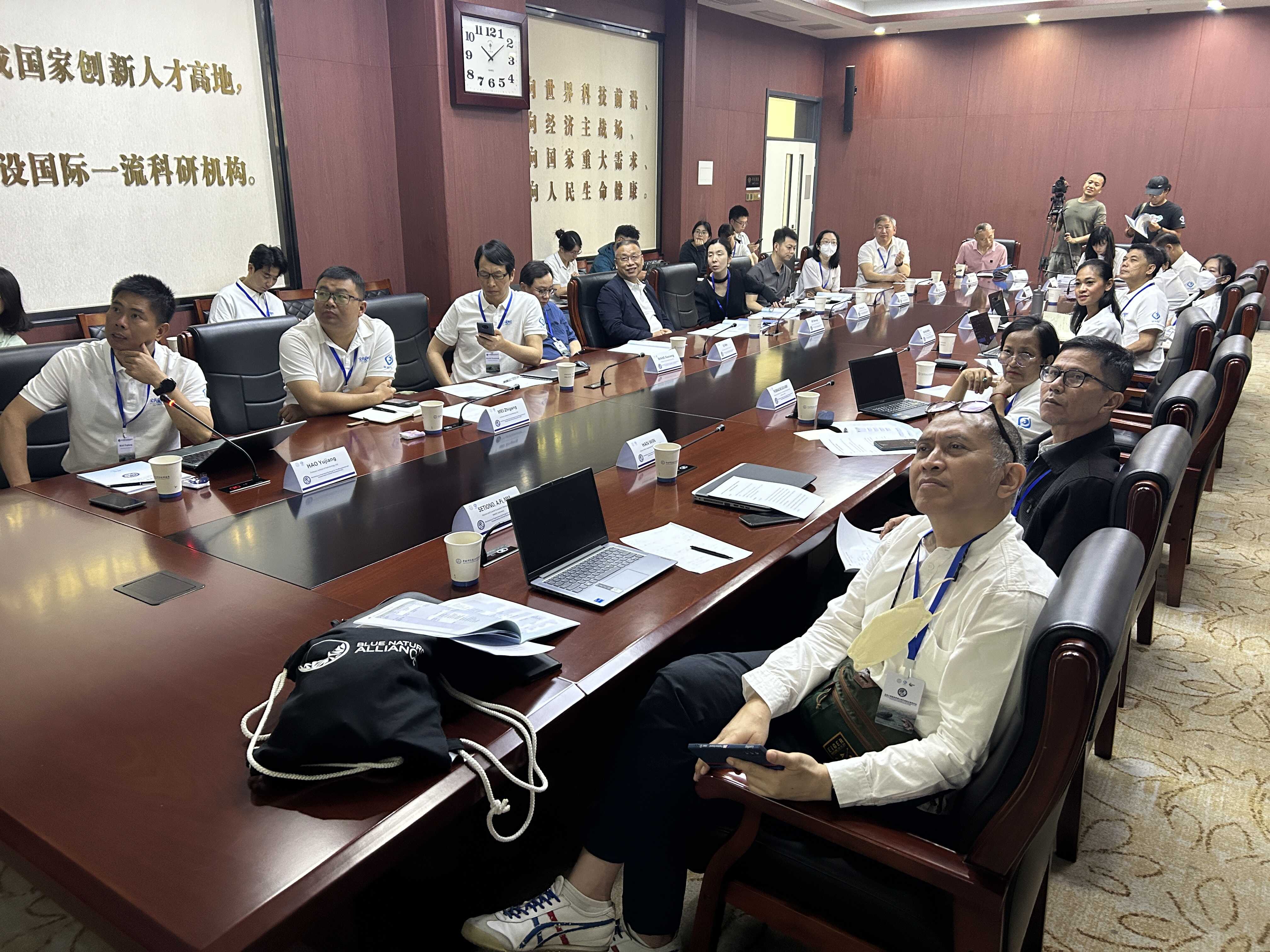
Newsroom
Workshop on Experience Exchange for the Management and Conservation of Smaill Cetaceans in Asia Held at IHB

Ms. Im Rachna, Under Secretary of State of Cambodia's Ministry of Agriculture, Forestry and Fisheries, presented gifts to XIE Shouqi, deputy director of IHB. (Credit: IHB)
Nineteen officials and marine mammal experts from five Southeast Asian nations gathered at the Institute of Hydrobiology (IHB) of the Chinese Academy of Sciences to exchange conservation strategies for endangered freshwater cetaceans. The workshop focused on adapting China's successful Yangtze finless porpoise protection model to safeguard the critically endangered Irrawaddy dolphin populations in the Mekong River.
China has accumulated nearly three decades of invaluable experience in conserving the critically endangered Yangtze finless porpoise, forming a unique "integrated conservation action plan" that combines in-situ conservation, ex-situ conservation, and captive breeding research. Experts examined how China’s "in-situ – ex-situ – captive breeding" model—especially ex-situ population management and reintroduction techniques — can be tailored to Mekong dolphin conservation.
"China's conservation efforts have achieved remarkable success, with the Yangtze finless porpoise population increasing by approximately 200 individuals in just five years," remarked Ms. Im Rachna, Under Secretary of State of Cambodia's Ministry of Agriculture, Forestry and Fisheries. "As an environmental conservationist, I understand how challenging such rapid growth is to accomplish. By comparison, our Mekong River Irrawaddy dolphin population has only grown by about 20 individuals over three years despite significant government intervention and international cooperation."
Following the conference, participants will conduct field visits to key conservation sites in Shishou and Honghu (Hubei Province), Yueyang (Hunan Province), and Nanjing (Jiangsu Province).
The Yangtze finless porpoise, an endemic freshwater cetacean, had faced persistent population decline before the "integrated conservation action plan" was implemented. This integrated approach has yielded measurable success, with the 2022 scientific survey recording 1,249 individuals - the first population rebound since monitoring began.
The critically endangered Irrawaddy dolphin presents an even more urgent conservation challenge. Only three isolated freshwater subpopulations remain in the Mekong River (Cambodia), Irrawaddy River (Myanmar) and Mahakam River (Indonesia)
Each subpopulation numbers fewer than 100 individuals and is classified as "Critically Endangered" on the IUCN Red List, requiring immediate international intervention.

Prof. WANG Kexiong gave a presentation to share the experience on the conservation the Yangtze finless porpoises. (Credit: IHB)

Mr. Ouk Vibol, director of Fisheries Conservation Department, Fisheries Administration, Cambodia, gave a presentation on the conservation of critically endangered Irrawaddy dolphin. (Credit: IHB)

Workshop on Experience Exchange for the Management and Conservation of Smaill Cetaceans in Asia was held at IHB. (Credit: IHB)

Nineteen officials and marine mammal experts from five Southeast Asian nations gathered at the Institute of Hydrobiology (IHB) of the Chinese Academy of Sciences to exchange conservation strategies for endangered freshwater cetaceans. (Credit: IHB)